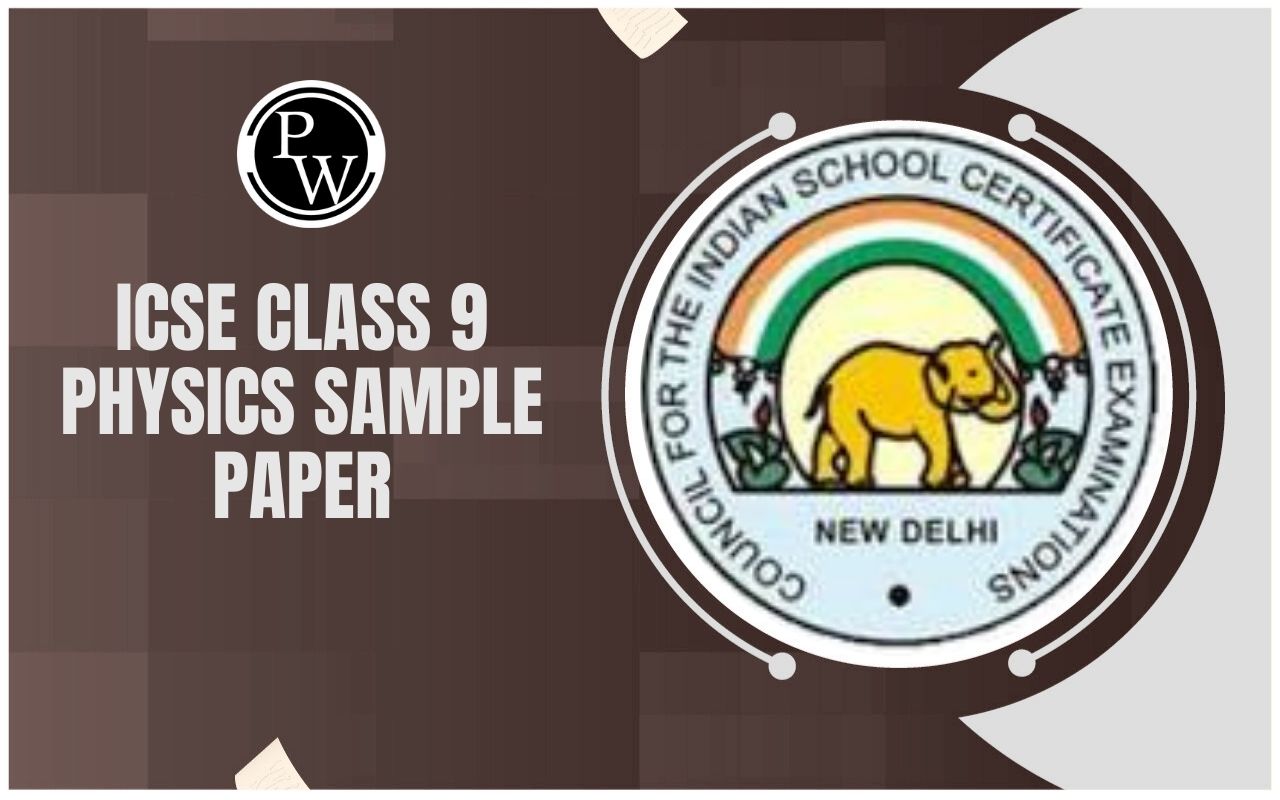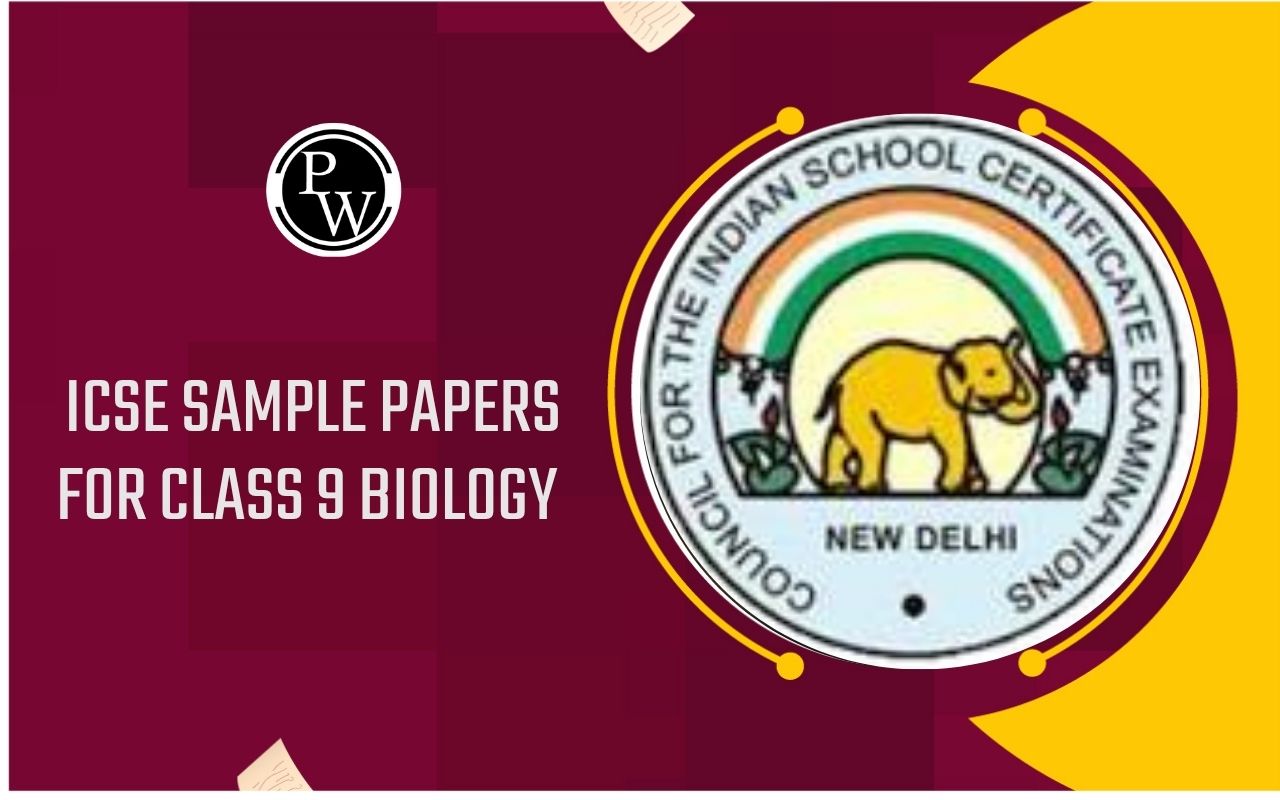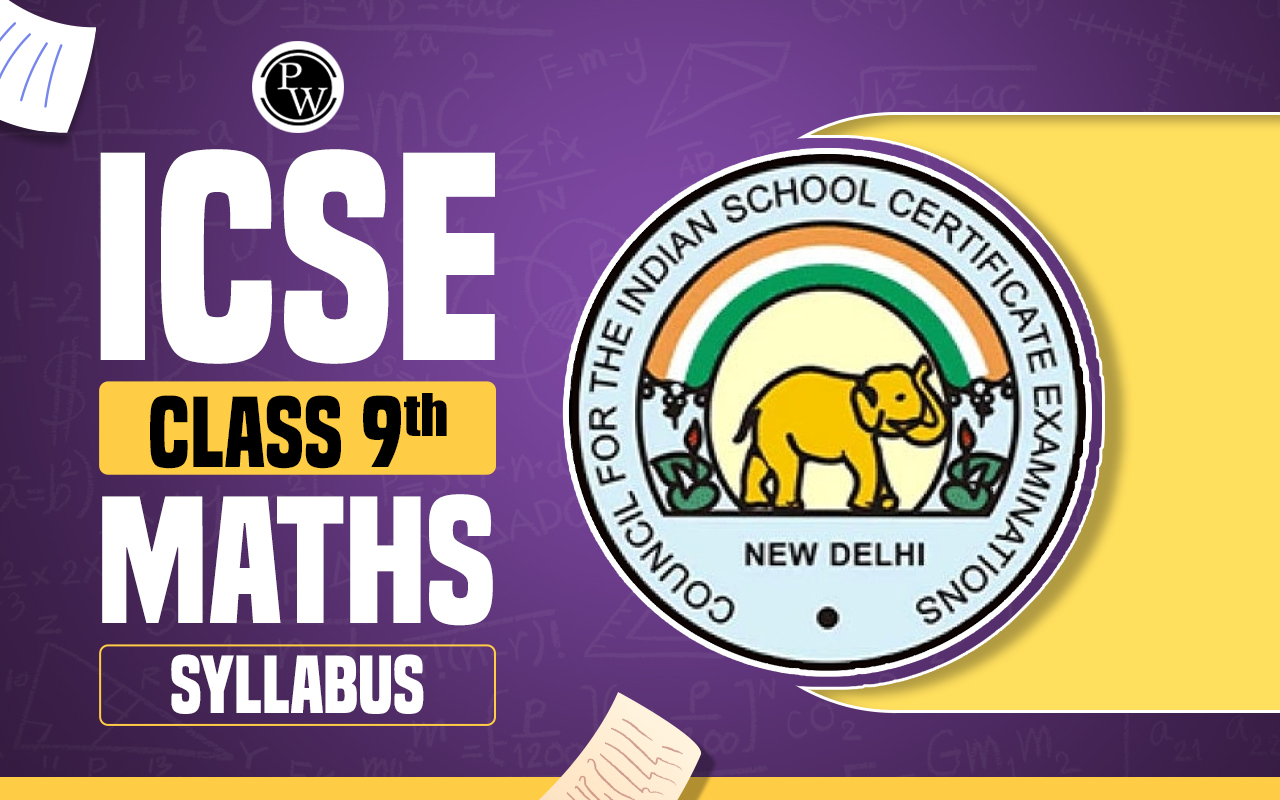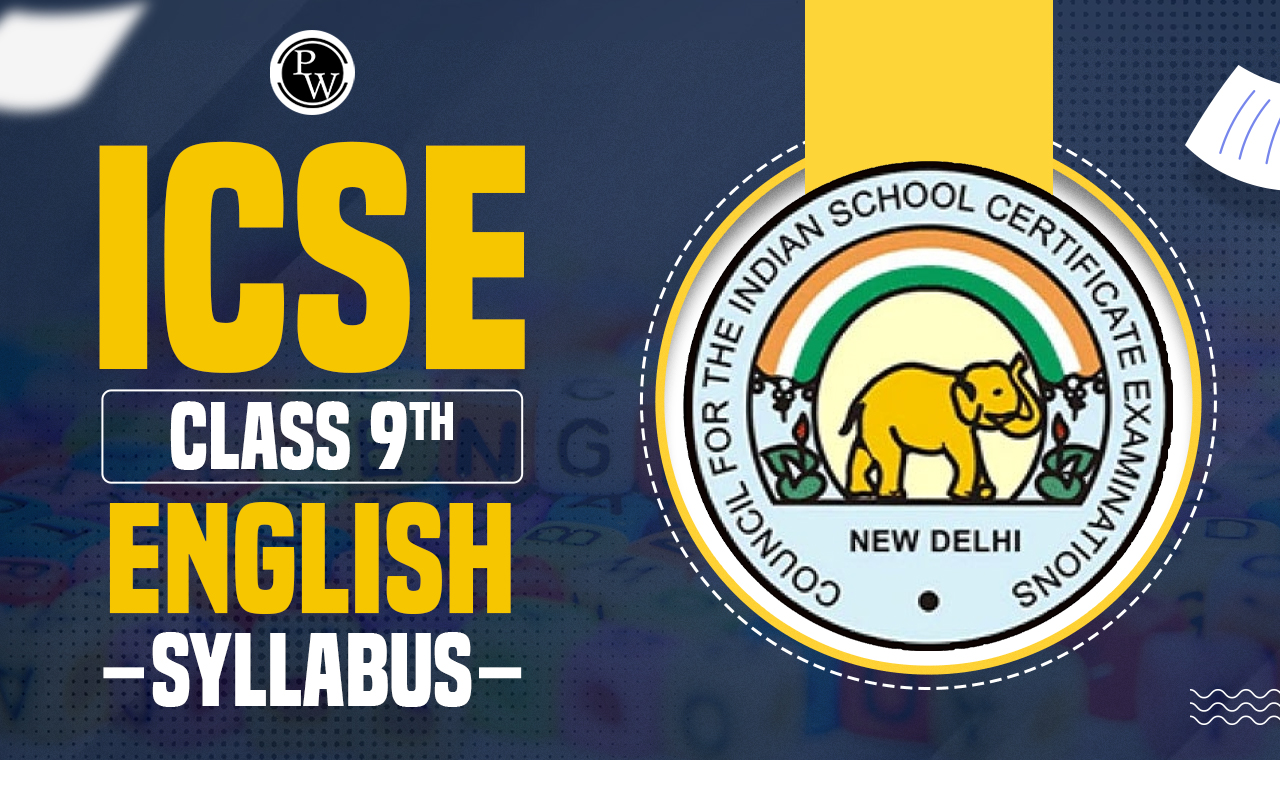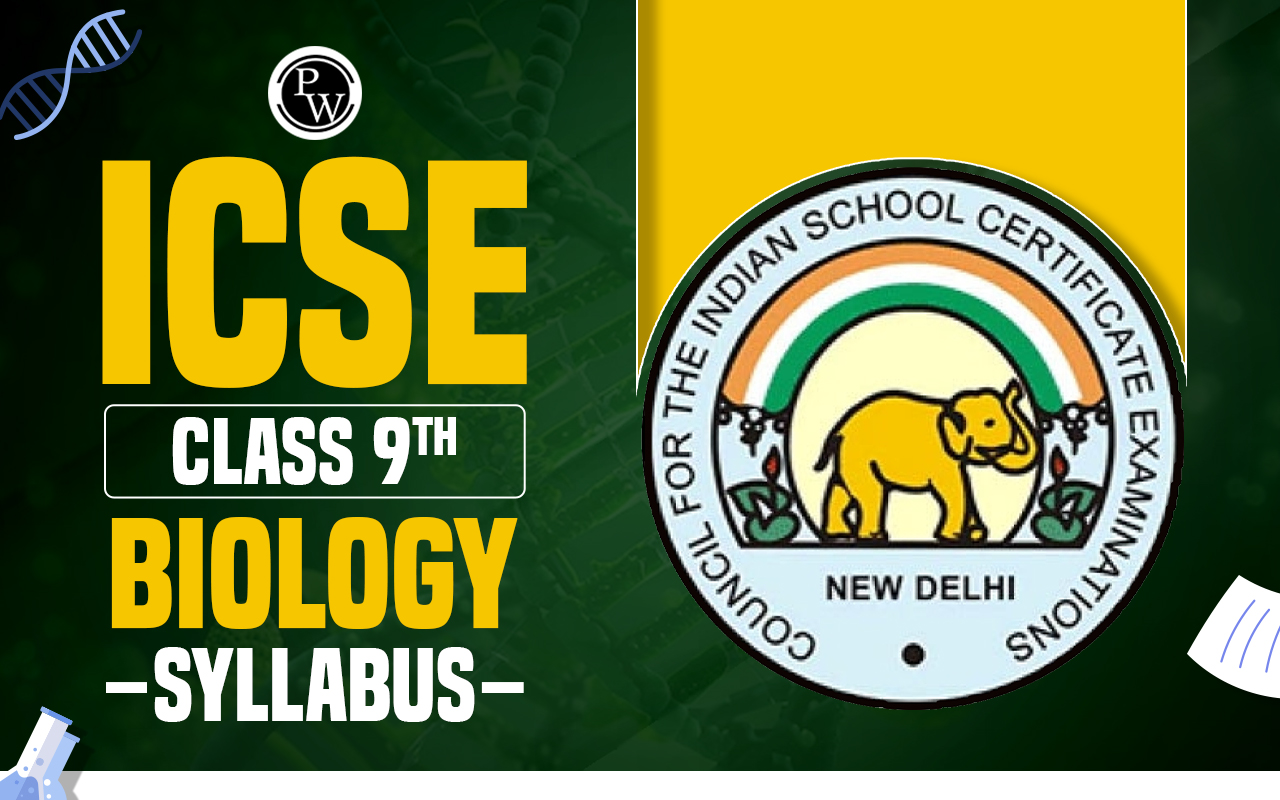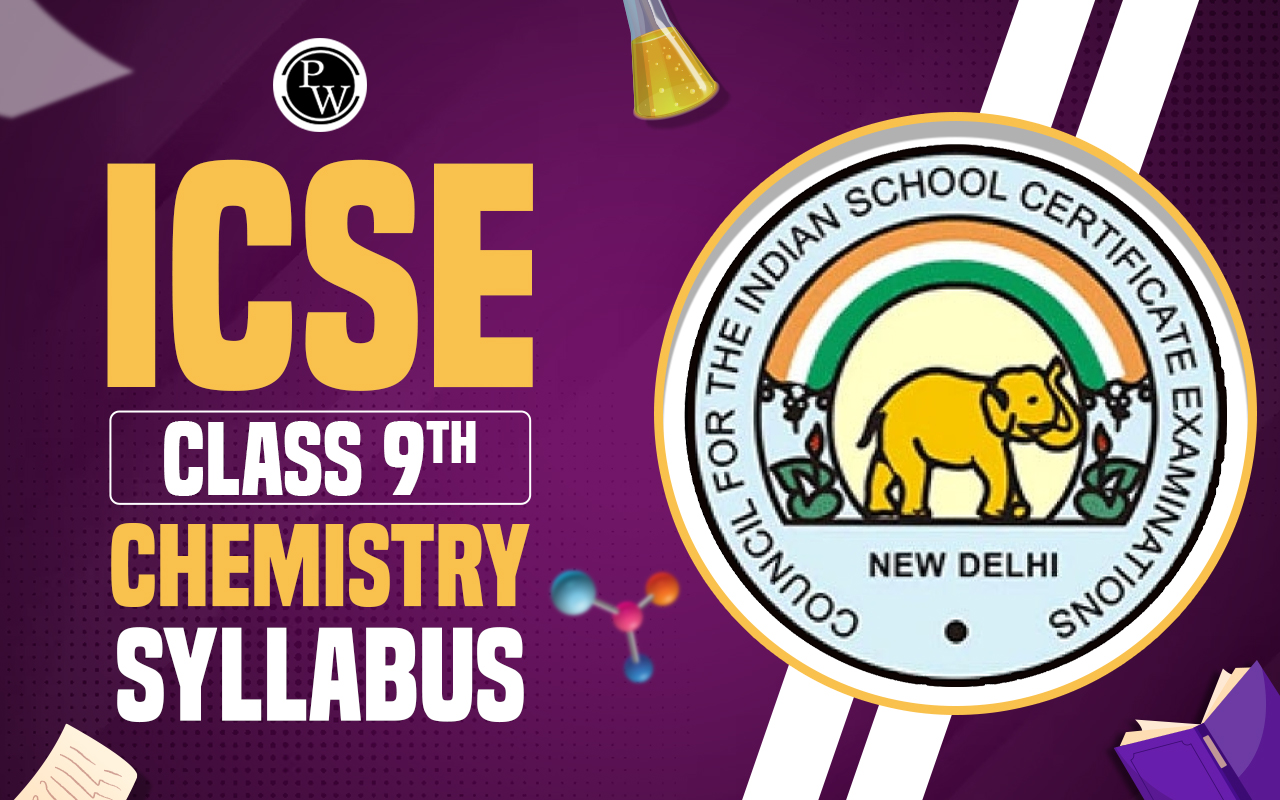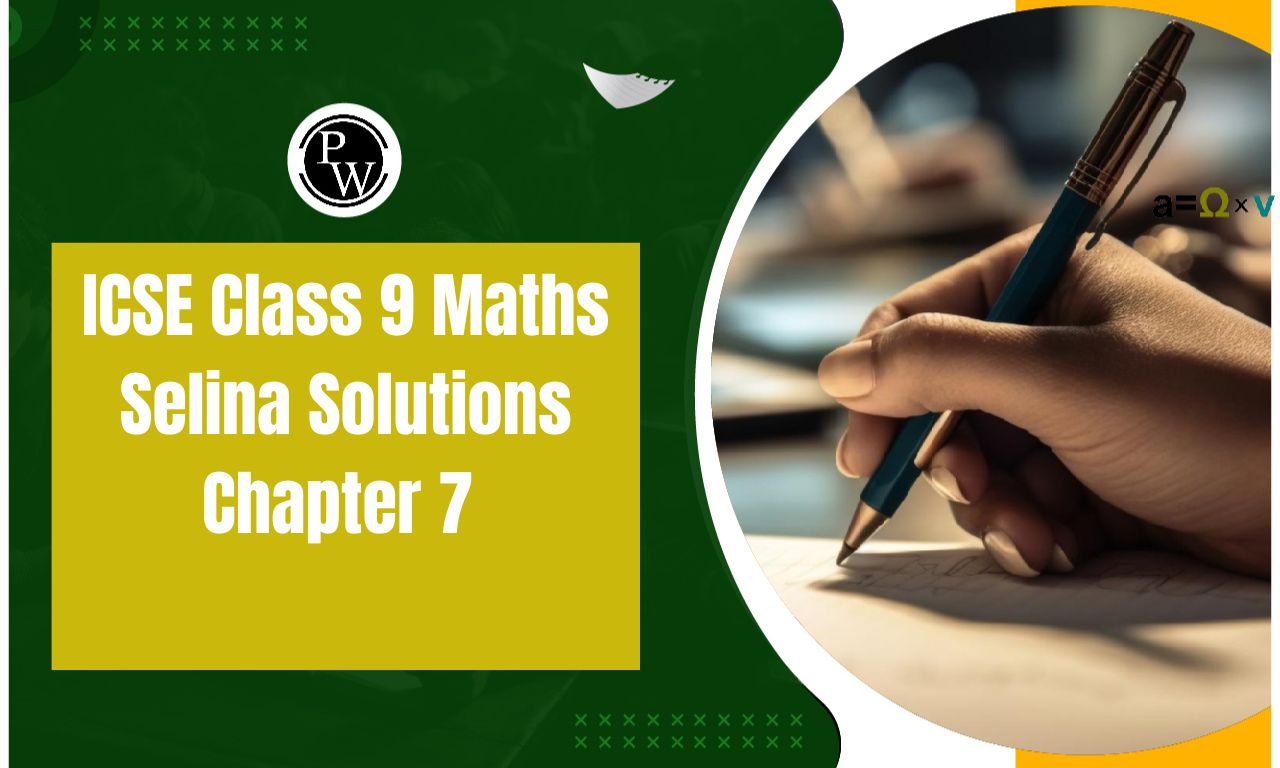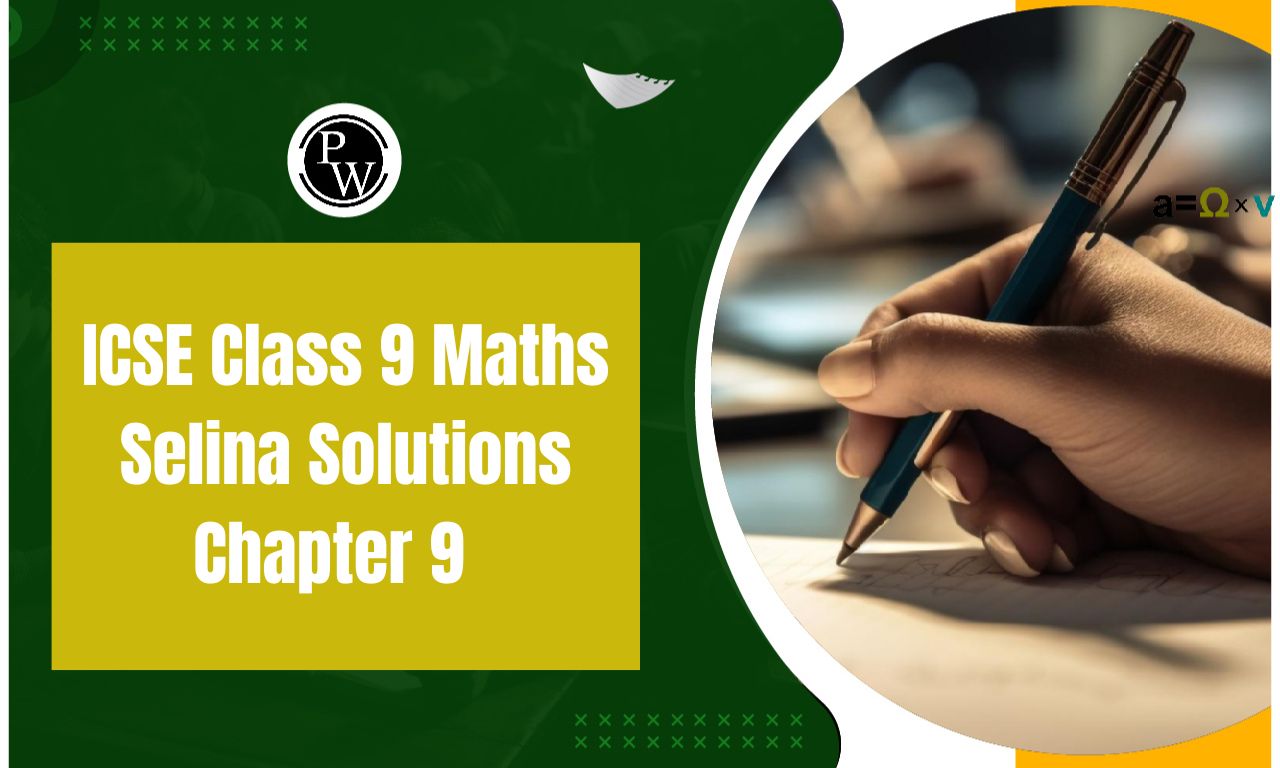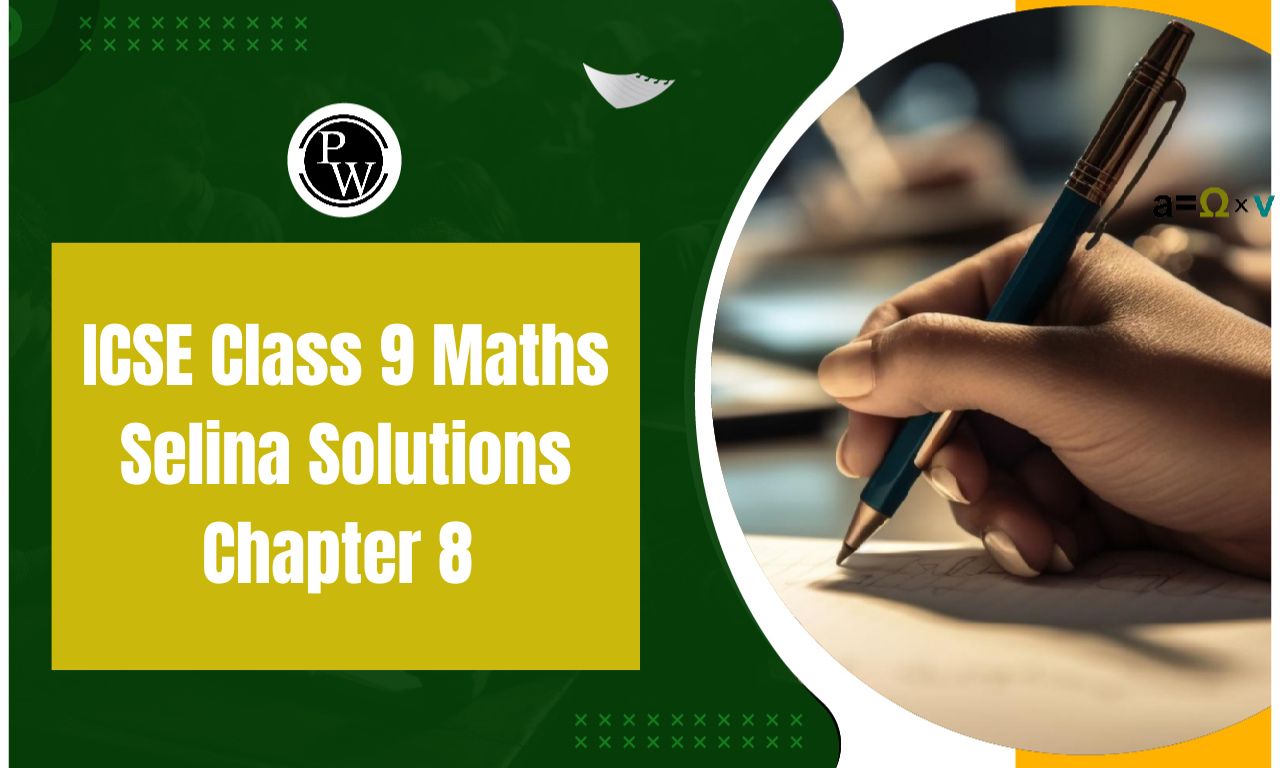
ICSE Class 9 Physics Syllabus 2025-26: Understanding Physics thoroughly and achieving excellent grades in the 9th-grade class is crucial for students. A strong grasp of the subject and scoring well not only boosts confidence but also contributes to a successful academic journey. The ICSE Class 9 Physics Syllabus proves helpful in this regard. It's widely acknowledged that Physics is a vital and interesting subject, encompassing various concepts that students need to grasp.
ICSE Class 9 Physics Syllabus 2025-26 Overview
ICSE Class 9 Physics Syllabus 2025-26 contains the following significant information that students can find:Chapters and Topics Overview: The syllabus also provides a detailed list of all the chapters and topics covered in the exam. Students should read this list carefully to prepare for the test.
Practical Assessment: Practical experiments play a significant role in the ICSE Class 9 Physics exam. The internal assessment, accounting for 20 marks, is based on these practicals. Students are required to perform three to five experiments, with a list of suggested experiments provided in the syllabus. However, teachers have the flexibility to modify or add to this list according to their judgement.
Evaluation Process: The practical exam is evaluated independently by both the subject teacher and an external examiner. The external examiner, preferably from the same institution, should not be teaching the specific topic in the concerned section or class. Understanding the Importance of the Syllabus: Students now recognize the importance of the syllabus in structuring their study and preparing for the exam.
ICSE Class 9 Physics Syllabus 2025-26 Aims
The ICSE Class 9 physics syllabus aims:- To gain knowledge and grasp the meanings, facts, ideas, explanations, rules, basics, and steps of Physics.
- To build abilities in the hands-on parts of managing equipment, noting observations, and creating diagrams, charts, and so on.
- To nurture practical, communicative, logical, and problem-solving abilities.
- To find that there's a dynamic and evolving physics that matters in today's era.
ICSE Class 9 Physics Syllabus 2025- 26
The ICSE Class 9 Physics Syllabus includes different subjects and smaller sections. The grading plan for the theory paper is also provided to help understand it better. To do well in the ICSE class 9 exam, students should use a good study plan to get a good score. Also, it's better for students to study every day rather than cramming in the last two months.| ICSE Class 9 Physics Syllabus 2025- 26 | |
| Chapter Name | Topics |
| Measurements and Experimentation |
|
| Motion in One Dimension |
|
| Laws of Motion |
|
| Fluids |
|
| Heat and Energy |
|
| Light |
|
| Sound |
|
| Electricity and Magnetism |
|
ICSE Class 9 Physics Chapter 1 - Measurements and Experimentation
- The syllabus includes the International System of Units (SI), which lists the necessary SI units along with their correct symbols. Another commonly used unit system is fps and cgs.
- Measurements are made using common tools such as Vernier callipers, micrometre screw gauges for length, and a simple pendulum for time. Length is measured using Vernier callipers and micrometre screw gauges. Increasing accuracy is achieved by decreasing the least-count (LC) of Vernier callipers and screw gauges. The concept of zero error is introduced briefly, with no numerical problems on callipers and screw gauges.
- The study of a simple pendulum covers time period, frequency, and the graph of length (l) versus T^2 only. The slope of the graph is discussed, and the formula T=2.π. √ l/g is presented without derivation. Only simple numerical problems are included in the syllabus.

ICSE Class 9 Physics Chapter 2 - Motion in One Dimension
Scalars and vectors, such as distance, speed, velocity, and acceleration; charts showing distance over time and speed over time; equations explaining uniformly accelerating motion with explanations. Demonstrations involving only scalar and vector quantities, covering both rest and motion in a single direction; exploring concepts like distance versus displacement, speed versus velocity, and acceleration versus retardation. Also, examining graphs illustrating distance over time and velocity over time, with a focus on understanding the slope of these graphs. Note that non-uniform acceleration is not considered in this context.ICSE Class 9 Physics Chapter 3 - Laws of Motion
- Forces can be grouped into contact and non-contact types, each having specific units of measurement in the cgs and SI systems. Examples of contact forces include friction, normal reaction, tension in strings, and forces during collisions. Non-contact forces, like gravitational, electric, and magnetic forces, act at a distance. Gravitational units are related to force units.
- Newton's First Law of Motion introduces inertia, mass, and force qualitatively. It states that objects at rest remain at rest, and those in motion continue moving unless acted upon by a force. Examples illustrate the concepts of inertia, mass, and force.
- Newton's Second Law (F=ma) details the relationship between force, mass, and acceleration. Linear momentum (p = mv) and the change in momentum (∆p = ∆(mv) = m∆v) are explored. Simple numerical problems involving F=ma and equations of motion are solved, considering only cgs and SI units.
- Newton's Third Law discusses action and reaction forces, emphasising that they always act on different bodies. Examples of action-reaction pairs (FBA and FAB) are provided.
- The Universal Law of Gravitation, expressed through an equation, highlights the importance of gravity. Concepts like acceleration due to gravity, free fall, weight, mass, and the comparison of mass and weight are discussed. Simple numerical problems related to gravitational force are included, excluding those involving variations in gravity.
ICSE Class 9 Chemistry Syllabus
ICSE Class 9 Physics Chapter 4 - Fluids
- Change in pressure with depth (using the formula p=hρg); Transmission of pressure in liquids; atmospheric pressure. Thrust and Pressure along with their units; pressure from a liquid column expressed as p = hρg; everyday examples like (i) the width of a dam base, (ii) Diver’s suit, etc. Some outcomes of p = hρg; transmission of pressure in liquids; Pascal's law; instances; atmospheric pressure; common occurrence and results. Pressure variations with altitude (only qualitative); uses like weather prediction and altimeter. (Basic numerical problems)
- Buoyancy, Archimedes’ Principle; floatation; connection with density; relative density; finding the relative density of a solid. Buoyancy, upthrust (FB); definition; various scenarios, FB >, = or < weight W of the immersed body; distinctive traits of upthrust; Archimedes’ principle; clarification of scenarios where the density ρ of the body is >, = or < the density ρ' of the fluid it's in. Relative Density (RD) and Archimedes’ principle. Experimental calculation of RD for a solid and liquid denser than water. Floatation: the floatation principle; the correlation between the density of a floating body, the density of the liquid it's floating in, and the immersed volume fraction of the body; (ρ1/ρ2 = V2/V1); the apparent weight of the floating object; application to ship, submarine, iceberg, balloons, etc. Basic numerical problems involving Archimedes’ principle, buoyancy, and floatation.
ICSE Class 9 Physics Chapter 5 - Heat and Energy
- Understanding Heat and Temperature: Heat is a form of energy, measured in joules (SI unit). One calorie is exactly equal to 4.186 joules.
- Water's Unusual Expansion: The expansion of water at 0 to 100 degrees Celsius, called anomalous expansion, is illustrated through graphs showing changes in volume and density. Hope's experiment explores the consequences of this unusual behaviour.
- Energy Flow and Thermodynamic Laws: Recognizing energy flow as linear and connecting it with the laws of thermodynamics: 'Energy is neither created nor destroyed' and 'No energy transfer is 100% efficient'.
- Diverse Energy Sources: Various energy sources include solar, wind, water, and nuclear energy. A simple discussion on the steps to produce electricity is provided. Differentiating between renewable (e.g., biogas, solar, wind, falling water, tidal) and non-renewable (e.g., coal, oil, natural gas) sources with elementary examples. Consideration of economic viability and the ability to meet demands. Hydroelectric power usage for lighting and tube wells.
- Global Warming and the Greenhouse Effect: Definitions, causes, and impacts on life on Earth are discussed. Future projections and necessary actions are considered. Energy degradation is explained with meanings and examples.
ICSE Class 9 Physics Chapter 6 - Light
- Reflection of light involves how light bounces off surfaces. Images are created by two mirrors, one parallel and one perpendicular. Rules for reflection and proof through experiments are discussed. We look at images formed in both parallel and perpendicular mirrors and explore the practical uses of flat mirrors.
- Spherical mirrors, we study the images they create. Concave and convex mirrors have specific uses, and simple ray diagrams help understand them. Key terms like centre, radius of curvature, pole, principal axis, focus, and focal length are introduced. We use ray diagrams to find image positions for objects along the principal axis, exploring characteristics of the images. The formula f = R/2 is mentioned without proving it. Sign conventions and solving numerical problems with mirror formulas are covered, but derivations are skipped. The practical applications of spherical mirrors are also discussed. No need for scale drawings or graphical representations in this chapter.
ICSE Class 9 Physics Chapter 7 - Sound
- Characteristics of Sound Waves: Sound waves require a medium to travel through. They move at different speeds in various mediums and can be compared to the speed of light. The terms related to sound propagation include frequency (f), wavelength (λ), and velocity (V), with the relationship V = fλ. Simple numerical problems can help understand these concepts. Factors Affecting Sound Speed; Various factors influence the speed of sound, and it's interesting to compare it with the speed of light. The significant difference in these speeds in the air has consequences, such as the occurrence of thunder and lightning.
- Sound Frequencies: Sound waves can be categorised into infrasonic, sonic, and ultrasonic frequencies, each with its applications. Exploring elementary ideas and basic applications helps in understanding these concepts. It's important to distinguish between ultrasonic and supersonic frequencies.
ICSE Class 9 Physics Chapter 8 - Electricity and Magnetism
- Creating a basic electric circuit involves using a battery and a light bulb to teach about electric current, potential difference, insulators, conductors, closed and open circuits, and the direction of current (both electron flow and conventional). The introduction to current electricity includes a brief overview of direct current sources such as cells and accumulators, without going into construction, working, or equations. The concept of electric current as the flow rate of electric charge is explored, along with the use of symbols in circuit diagrams. Current detection using a Galvanometer or ammeter is mentioned, but details about how the metres work are not included. An electric circuit is qualitatively explained using a cell, key, and resistance components, touching on the idea of work done in transferring charge through a conductor wire, represented by the potential difference equation V = W/q. No derivation of the formula is provided, only simple numerical problems.
- In the social context, initiatives are discussed for enhancing the efficiency of existing technologies and introducing environmentally friendly ones. Creating awareness and encouraging responsible resource and product usage, such as reducing electricity consumption, is emphasised.
- The topic shifts to magnetism, covering induced magnetism, the Earth's magnetic field, neutral points in magnetic fields, and the magnetism induced by bar magnets on magnetic materials. The sequence of induction preceding attraction, properties of magnetic field lines, and evidence of Earth's magnetic field existence using a magnetic compass are explained. The contrast between the uniform magnetic field of the Earth and the nonuniform field of a bar magnet placed along the magnetic north-south axis is highlighted, along with the concept of a neutral point and properties of magnetic field lines.
Internal Assessment of Practical Work
The following are the experiments that a student should perform.- Determine the smallest measurement that Vernier callipers can make and use them to find the dimensions (length and diameter) of a small cylinder, such as a metal rod measuring 2 to 3 cm in length and 1 to 2 cm in diameter. Take three sets of readings and calculate the average.
- Find the pitch and smallest measurement of a given screw gauge, then measure the mean radius of a wire using the screw gauge. Take three measurements for accuracy.
- Measure the length, width, and thickness of a glass block using a metre rule, with each reading accurate to a millimetre. Take three readings for each dimension and calculate the volume of the block in cubic centimetres and cubic metres. Determine the mass of the block using a balance and calculate the density in both CGS and SI units.
- Measure the volume of a metal bob using the displacement method and also calculate the volume from the radius measured with Vernier callipers. Comment on the accuracies of the two methods.
- Record five sets of readings for the time taken for 20 oscillations of a simple pendulum with lengths of approximately 70, 80, 90, 100, and 110 cm. Calculate the time periods and their squares for each length, plot a graph of length versus square of the time period, and determine the value of gravity in the laboratory.
- Suspend two thermometers, one with Celsius and the other with Fahrenheit scale, in a beaker of water on a tripod stand. Record the readings at different temperatures, plot a graph of Fahrenheit versus Celsius, and compare the slope with the theoretical value.
- Using a vertical plane mirror, obtain reflected rays for three incident rays at different angles and measure the angles of incidence and reflection to check if they are equal.
- Place three object pins at different distances on a line perpendicular to a vertical plane mirror. Obtain two reflected rays for each pin and measure the object and image distances to check if they are equal.
- Determine the focal length of a concave mirror using the distant object method and the one-needle method, noting observations in numbered rows.
- Connect a DC source, a key, and a bulb in series and observe the bulb lighting up. Add another identical bulb in series and observe the brightness. Disconnect the second bulb, reconnect the circuit, and then connect the second bulb in parallel. Observe and draw conclusions about current and resistance in the different cases.
- Plot Earth's magnetic field lines using a small compass needle. Place a bar magnet with its axis parallel to Earth's magnetic lines and plot the magnetic field in the region around the magnet. Identify regions where the combined magnetic field is strongest, very weak but not zero, and zero.
- Use a spring balance to find the weight of a metal ball in air and when immersed in water. Calculate upthrust, mass, and weight of the water displaced to verify Archimedes' principle.
ICSE Class 9 Geography Syllabus
Tips to Prepare for the ICSE Class 9 Physics Exam
The following are some tips to prepare for the ICSE class 9 Physics exam. Prepare a Timetable Once you understand the ICSE Class 9 Physics Syllabus, create a study schedule. Allocate one and a half hours daily for physics. Set aside additional time for challenging topics in the ICSE Class 9 Physics Syllabus. Also, include regular breaks while studying. This helps ease your mind and allows better concentration on the concepts.Refer to the Good Study Materials It's crucial to find reliable study resources for the ICSE Class 9 Physics Syllabus. This is important because effective study materials can help you understand the concepts clearly and directly, contributing to half of your marks. Additionally, opt for study materials that include sample papers, as they can give you an idea of the question types.
Practice More After finishing a section in the ICSE Class 9 Physics Syllabus, work on extra questions related to that part. This will help you grasp the questions more effectively, and you'll retain the information for a longer duration. Also, practising will enhance your speed and accuracy in solving Physics problems.
Solve Previous Year's Question Papers After finishing the ICSE Class 9 Physics Syllabus, try working on the question papers from the past years. It will aid in understanding Physics better. When you attempt the real question paper, you'll see how well you did on each question. Additionally, it's important to review and understand any mistakes you made while solving the previous year's question paper. Do this on the same day to recognize and avoid repeating those errors.
Attempt Mock Tests Taking a practice test is a good way to prepare for the exam. Choose practice tests that cover the most recent ICSE Class 9 Physics Syllabus. This ensures that the questions are about the latest topics. It can help lower stress and boost your readiness.
ICSE Class 9 Physics Syllabus 2025-26 FAQs
How does the syllabus incorporate practical work into the curriculum?
Practical work is integrated to reinforce theoretical concepts, allowing students to engage in experiments that complement their understanding of physics.
What safety precautions are emphasised during practical sessions?
Students are instructed on safety measures, including proper handling of equipment, wearing protective gear, and following protocols to ensure a secure learning environment.
Are there any specific resources recommended for additional study?
Yes, the syllabus recommends textbooks, online resources, and supplementary materials to enhance students' understanding and self-study.
How can students prepare effectively for the physics exam?
Effective exam preparation involves regular practice, understanding the weightage of each unit, and revisiting key concepts through self-assessment.
What is the significance of understanding buoyancy in fluids?
Understanding buoyancy is crucial for comprehending the behaviour of objects in fluids, influencing design principles in various engineering applications.
🔥 Trending Blogs
Talk to a counsellorHave doubts? Our support team will be happy to assist you!

Check out these Related Articles
Free Learning Resources
PW Books
Notes (Class 10-12)
PW Study Materials
Notes (Class 6-9)
Ncert Solutions
Govt Exams
Class 6th to 12th Online Courses
Govt Job Exams Courses
UPSC Coaching
Defence Exam Coaching
Gate Exam Coaching
Other Exams
Know about Physics Wallah
Physics Wallah is an Indian edtech platform that provides accessible & comprehensive learning experiences to students from Class 6th to postgraduate level. We also provide extensive NCERT solutions, sample paper, NEET, JEE Mains, BITSAT previous year papers & more such resources to students. Physics Wallah also caters to over 3.5 million registered students and over 78 lakh+ Youtube subscribers with 4.8 rating on its app.
We Stand Out because
We provide students with intensive courses with India’s qualified & experienced faculties & mentors. PW strives to make the learning experience comprehensive and accessible for students of all sections of society. We believe in empowering every single student who couldn't dream of a good career in engineering and medical field earlier.
Our Key Focus Areas
Physics Wallah's main focus is to make the learning experience as economical as possible for all students. With our affordable courses like Lakshya, Udaan and Arjuna and many others, we have been able to provide a platform for lakhs of aspirants. From providing Chemistry, Maths, Physics formula to giving e-books of eminent authors like RD Sharma, RS Aggarwal and Lakhmir Singh, PW focuses on every single student's need for preparation.
What Makes Us Different
Physics Wallah strives to develop a comprehensive pedagogical structure for students, where they get a state-of-the-art learning experience with study material and resources. Apart from catering students preparing for JEE Mains and NEET, PW also provides study material for each state board like Uttar Pradesh, Bihar, and others
Copyright © 2025 Physicswallah Limited All rights reserved.
Get App
